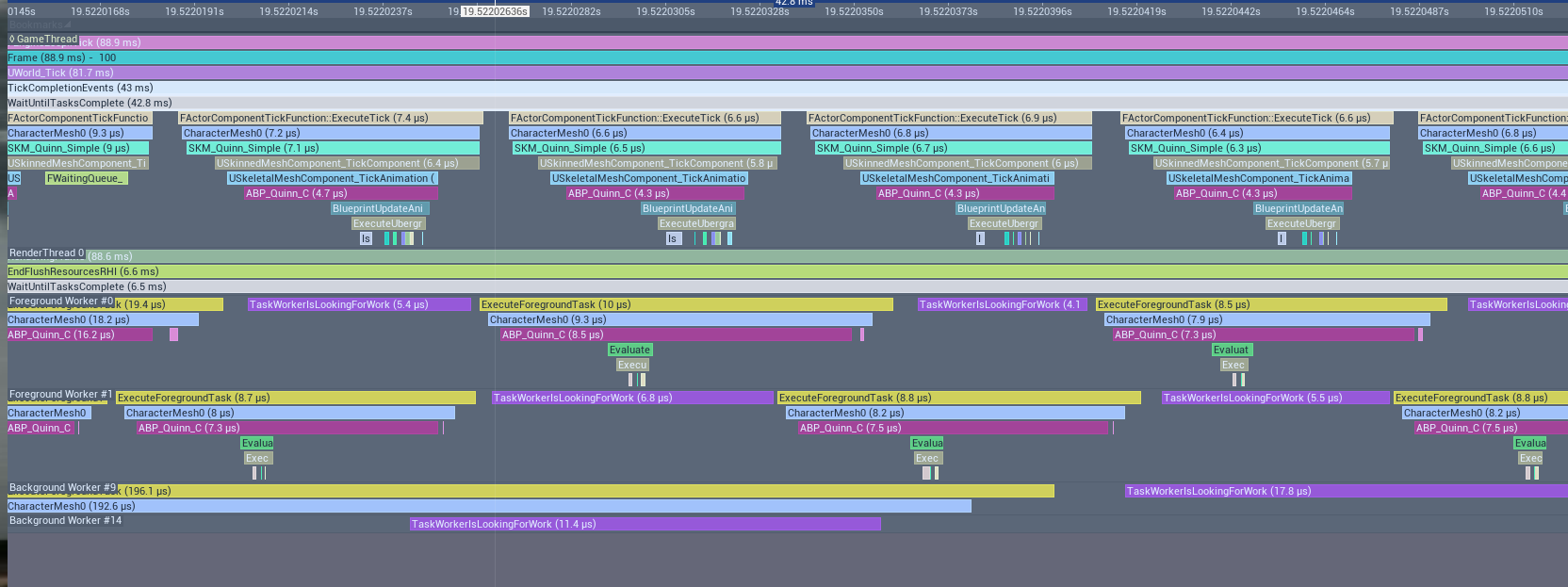Optimization Part 4 - Adding Task Data to Traces
In Part 3 we used Unreal Insights to sample performance data and display it like this:

In Part 3 we used Unreal Insights to sample performance data and display it like this:

In Part 2 we made a test environment and look at stats usage. Here we use Unreal Insights to determine what specifically is making the project run slow.
This page describes a simple test project which can be used to experiment with optimization in Unreal Engine. The test project is created based on the Game | Third Person | C++ project including the starter content.
This article explores project build configurations.
If we derive a C++ class from an existing Unreal class, and that existing class contains components, we can extend (subclass) those components without changing the source code of the base class.
This is the first of a series of articles about the Unreal Mass framework.
This is an attempt to understand the Unreal Game Features Subsystem. The Game Features Subsystem is used in the Valley of the Ancient and Lyra examples, and in Fortnite, to distribute game assets and functions as plugins.
What does "Listener must have a valid id to update its sense config" mean?
A delegate is a object which can be used to call:
The aim of this is to examine the source code from the Lyra example provided by Epic Games and to try and identify and document practices and approaches for using c++.
Here we look at use of Gameplay Tags and the Gameplay Ability System (GAS), and try and trace the use of gameplay tags from pressing a button to getting a response in the UI and in gameplay.
Examining the source code from the Lyra example provided by Epic Games and to try and identify and document practices and approaches for using c++.
The page PhysicsUsingBlueprints describes the creation of a simple physics example implementing a trebuchet using blueprints.
This page describes implementing the same thing using c++.
This post documents how a UObject functions in Unreal Engine and how the classes generated by the Unreal Header Tool (UHT) work.
Unreal Engine supports plugins, which contain code and game content. They can also wrap a third party library (on Windows, one or more .dll files) and allow the functionality of that library to be called directly from C++ and indirectly using Blueprint objects which are part of the plugin.
This post is about creating a new Blueprint node in c++ to rotate an Actor object around a pivot point.
Comparing the error messages created by Clang and by MSVC.
Updated for Unreal Engine 5.0
This document describes the basics of reading and writing Json with Unreal Engine classes. The code here reads and writes elements explicitly rather than reading and writing entire structs at one time. This is suitable for objects which are not using the UCLASS or UOBJECT macros to create reflection data.
Using Slate UI Classes from C++
Updated for Unreal Engine 5.0
Reflection is the ability to inspect C++ classes and objects at runtime and gather information about their data types and properties. Normally C++ does not maintain programmer-accessible information about, say, what members a struct or class has. Unreal Engine uses macros such as UCLASS and UPROPERTY to create information about classes, structs, methods, properties, and to make that information available to C++ at runtime.
A brief guide to Visual Studio 2022 setup for working with Unreal Engine